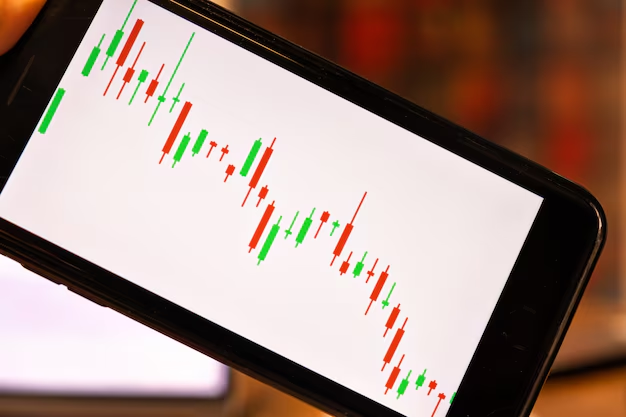If you are a forex trader looking to understand how to read the Money Flow Index (MFI) indicator, then you are in the right place.
The MFI is a crucial tool for any forex trader who wants to gain deeper insights into market momentum and make better trading decisions.
Understanding the MFI allows traders to see the flow of money into and out of a financial asset by combining price and volume, which ultimately helps traders assess buying and selling pressures.
In this extensive guide, we will explain how to read the MFI indicator, why it’s important in forex trading, and how you can use it to make smarter, more informed trading decisions.
In This Post
What is the MFI Indicator?
The Money Flow Index (MFI) is a momentum-based indicator that takes into account both price and volume.
It measures the strength of money flowing into or out of an asset by analyzing the relationship between price changes and trading volume.
What makes the MFI stand out from other momentum indicators, like the Relative Strength Index (RSI), is that while the RSI only considers price movements, the MFI incorporates trading volume, making it a more reliable and accurate tool for traders who need to consider market depth.
The MFI helps traders identify when an asset is overbought or oversold, indicating potential trend reversals.
The MFI is often used by forex traders to detect changes in market conditions, such as trend reversals or price corrections, and is particularly useful for analyzing the strength of ongoing trends.
By examining the MFI, traders can spot entry and exit points with greater precision.
How Does the MFI Work?
The MFI works by oscillating between a range of 0 to 100. By examining these values, traders can determine the strength of the market’s money flow.
Overbought Conditions
When the MFI is above 80, it suggests that the asset is in an overbought condition, which means that buying pressure has driven the price up to unsustainable levels.
Traders interpret this as a signal that the asset may be due for a downward correction or price pullback.
Oversold Conditions
On the other hand, when the MFI falls below 20, it indicates that the asset is oversold. This suggests that selling pressure has pushed the price too low and that the market may be due for a rebound or upward price movement.
By closely monitoring the MFI, traders can gauge when an asset may be due for a trend reversal, based on the buying and selling pressure that is reflected in the indicator.
How to Read the MFI Indicator
To fully understand how the MFI works and how you can use it in your trading strategy, it’s important to break it down into clear steps.
Let’s look into each step involved in reading and interpreting the MFI indicator effectively.
Step 1: Identify Overbought and Oversold Levels
The first step in using the MFI indicator is recognizing the overbought and oversold levels. These levels are critical for understanding potential market reversals.
MFI Above 80
When the MFI is above the 80 level, it signifies that the asset is overbought. Traders typically interpret this as a signal that the price is too high and a downward correction might be imminent.
This could be a good time to consider taking profits or preparing for a short trade, anticipating that the price may drop soon.
MFI Below 20
Conversely, when the MFI falls below the 20 level, it indicates an oversold condition. In this case, traders might see this as a signal that the price is too low, and a price increase could soon follow.
This is often interpreted as a buying opportunity for traders looking to enter a long position before the price rises again.
Step 2: Look for Divergence
Divergence occurs when the price of an asset moves in the opposite direction of the MFI indicator.
Divergence can be a strong signal of an impending trend reversal, and it’s something that traders should always look for when using the MFI.
Bullish Divergence
A bullish divergence occurs when the price is making lower lows, but the MFI is making higher lows.
This suggests that although the price is falling, buying pressure is gradually increasing, which could lead to a price reversal soon.
This is a signal that traders should be on the lookout for potential long trades.
Bearish Divergence
A bearish divergence occurs when the price is making higher highs, but the MFI is making lower highs.
This suggests that even though the price is rising, buying pressure is weakening. This could be a warning sign that the upward trend is losing strength and a downward move may be on the horizon.
This is a signal that traders should consider preparing for a potential short trade.
Step 3: Analyze MFI Crossovers
MFI crossovers happen when the MFI crosses key levels such as 20, 50, or 80. These crossovers provide traders with insights into changes in market momentum.
Understanding when these crossovers occur can help traders identify potential trend changes.
MFI Crossing Above 20
If the MFI crosses above the 20 level, it is an indication that buying pressure is increasing, and the asset could start moving upward.
This may signal the beginning of an upward trend and could be a good opportunity for traders to consider buying.
MFI Crossing Below 80
If the MFI crosses below the 80 level, it suggests that selling pressure is rising, which could mean that the price may start to fall.
This could be a sign that the current bullish trend is losing steam and that a bearish move is on the horizon.
Step 4: Confirm with Other Indicators
While the MFI is a powerful tool on its own, it is most effective when combined with other indicators to confirm signals.
The MFI works best in conjunction with tools like the RSI, MACD, and Bollinger Bands.
By using multiple indicators, traders can validate their trading decisions and reduce the risk of false signals.
For example, if the MFI indicates an overbought condition but the RSI also shows the same signal, then traders can have more confidence that a price correction is imminent.
Similarly, when the MFI shows an oversold signal and the MACD indicates bullish momentum, traders can consider entering a long trade with more conviction.
Using MFI in Forex Trading
Let’s take a closer look at a practical example of using the MFI in forex trading, using the EUR/USD currency pair.
The price of EUR/USD has been rising for several days, and you notice that the MFI is climbing above 80, indicating overbought conditions.
As the price continues to climb, the MFI starts to fall. This suggests that the buying pressure is weakening, and the upward momentum may be about to reverse.
Based on this analysis, traders would consider selling the EUR/USD currency pair, anticipating that the price will soon drop due to the loss of buying pressure.
This example demonstrates how the MFI indicator can help traders identify when to take profits and prepare for a reversal in the market.
Pros and Cons of Using the MFI Indicator
Like any trading tool, the MFI indicator has its strengths and weaknesses. Let’s take a look at some of the key pros and cons of using the MFI indicator in forex trading.
Pros
- Unlike the RSI, which only looks at price movements, the MFI considers both price and volume. This makes it a more reliable indicator for assessing market trends, as it gives a fuller picture of market conditions.
- The MFI can be used to spot potential trend reversals before they happen. By monitoring overbought and oversold conditions, divergence, and crossovers, traders can anticipate changes in the market and position themselves for profitable trades.
- The MFI is particularly useful in forex trading, where volume and price fluctuations play a significant role in market movement. Many forex traders rely on the MFI to gauge the strength of trends and spot trading opportunities.
Cons
- Like all technical indicators, the MFI can produce false signals, especially during periods of low market volatility. Traders should not rely solely on the MFI and should always use it in conjunction with other tools.
- The MFI works best when there is significant trading volume. In low-volume markets, the MFI may not provide reliable signals, and traders may find that the indicator is less effective.
Frequently Asked Question
What is the best setting for the MFI indicator?
- The standard setting for the MFI is 14 periods. However, traders can adjust this setting depending on their trading strategy and time frame. For example, shorter periods may be used for day trading, while longer periods are better suited for long-term trading.
Can I use the MFI for short-term trading?
- Yes, the MFI can be used for short-term trading. Many day traders use the MFI to assess market conditions and find entry and exit points within the course of a single trading day. It is most effective when combined with other indicators for confirmation.
What is the main difference between the MFI and RSI?
- The difference between the MFI and the RSI is that the MFI incorporates both price and volume, while the RSI only looks at price movements. This makes the MFI a more comprehensive indicator for gauging market momentum.
Is the MFI reliable for forex trading?
- Yes, the MFI is a reliable tool for forex trading, especially when combined with other indicators like the RSI, MACD, or Bollinger Bands. It provides valuable insights into the strength of market trends and can help traders identify potential price reversals.
Conclusion
Learning the Money Flow Index (MFI) is essential for forex traders who want to enhance their market analysis.
By understanding how to read overbought and oversold levels, spotting divergence, analyzing MFI crossovers, and confirming signals with other indicators, you can use the MFI to make more informed and profitable trading decisions.
If you found this guide helpful, don’t hesitate to share it with other traders, and feel free to leave a comment with your thoughts or questions.




